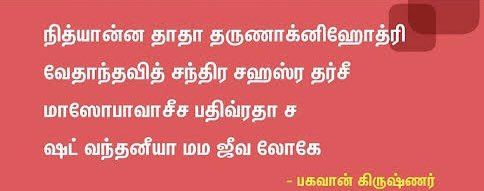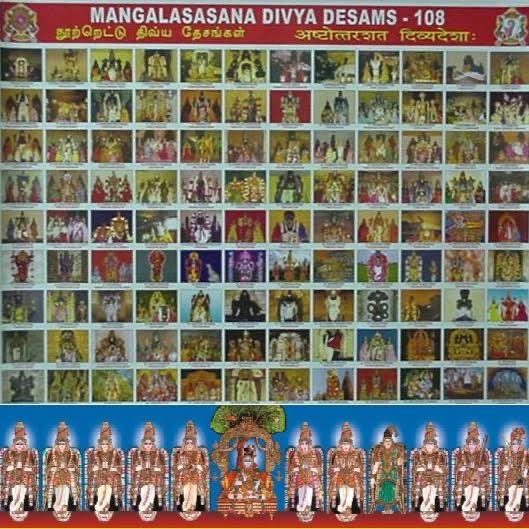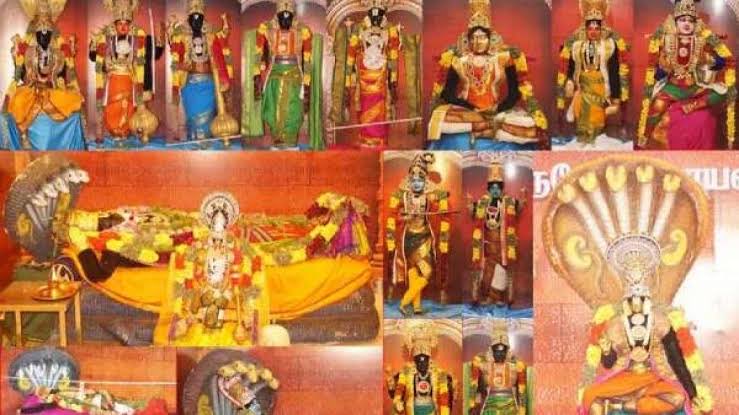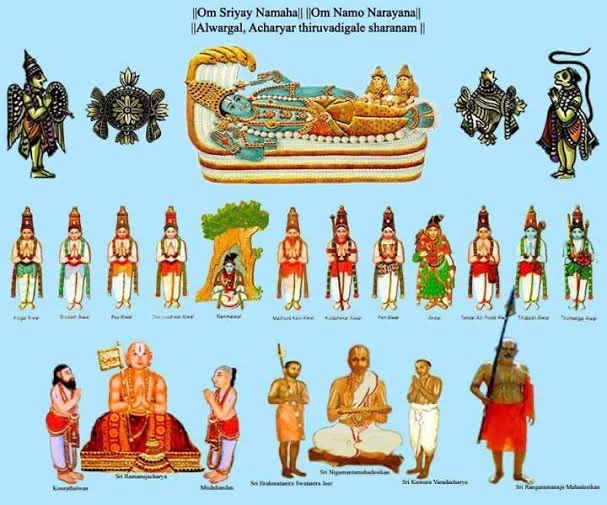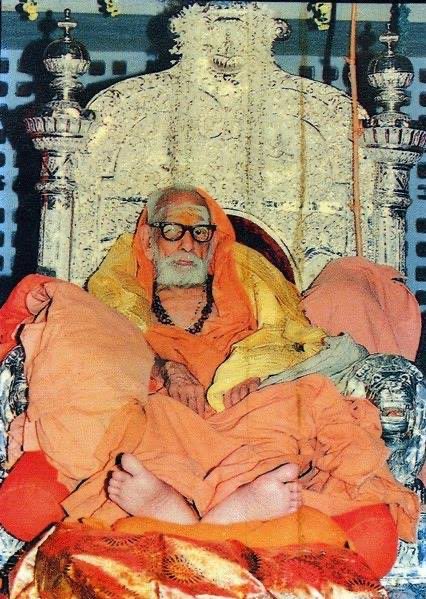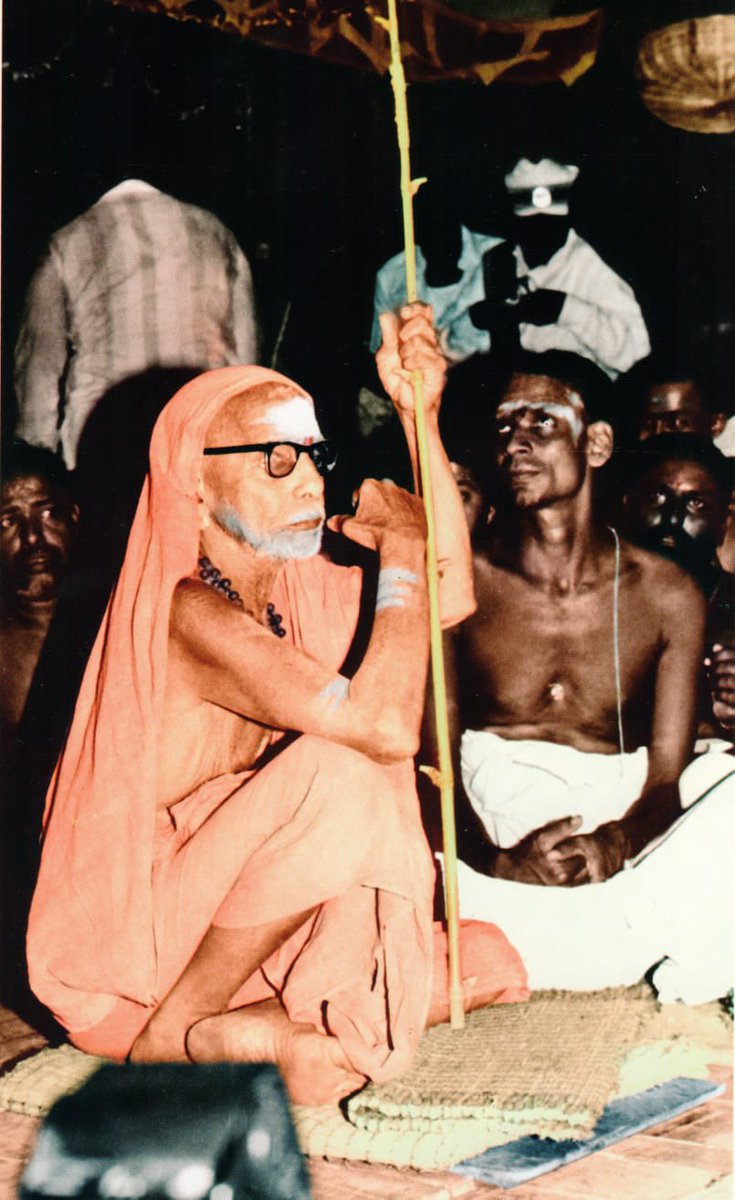
#SymbolsOn_SriKrishnas_feet
On Krishna’s feet there are 19 symbols of Sriman Narayana.
On His right foot are a Lotus, flag, chakra, umbrella, 4 swastikas, uddhava rekha (upcurving line), barley corn, elephant goad, ashtakon (octagon) four blackberry fruits, and vajra. On His

On Krishna’s feet there are 19 symbols of Sriman Narayana.
On His right foot are a Lotus, flag, chakra, umbrella, 4 swastikas, uddhava rekha (upcurving line), barley corn, elephant goad, ashtakon (octagon) four blackberry fruits, and vajra. On His


left foot are 4 water pots, a conch, an unstrung bow, cow’s hoof, fish, crescent moon, akash (sky), and a triangle.
#RightFoot - 11 Signs
1. Barley corn - This mark signifies that His devotees receive all enjoyable prosperity by serving His lotus feet. It also means that once
#RightFoot - 11 Signs
1. Barley corn - This mark signifies that His devotees receive all enjoyable prosperity by serving His lotus feet. It also means that once

one finds shelter at His lotus feet, then the devotee’s former journey through many births and deaths is actually very tiny, just like a single grain of barley. Just as the barley grains are sustenance of life for living beings, similarly His glorious feet are the nourishment 

of all souls.
2. Disk (Chakra) - This mark cuts down the six enemies of His devotees – lust, anger, greed, illusion, envy and bewilderment. It indicates teja-tattva, or the principle of brilliance by which the darkness of sin within is destroyed.
3. Upward curving line
2. Disk (Chakra) - This mark cuts down the six enemies of His devotees – lust, anger, greed, illusion, envy and bewilderment. It indicates teja-tattva, or the principle of brilliance by which the darkness of sin within is destroyed.
3. Upward curving line
(Ürdhva-rekhä) - This mark signifies that the devotees who cling to His feet, will be transported to the higher realms. It also indicates that the path to His feet, being free of external designations, is very direct. It also reveals that His feet can reach down to the lowest of
fallen souls and deliver those who have taken shelter of Him.
4. Lotus - The lotus signifies that just as a lotus grows out of water, similarly, those whose eyes swell with tears upon holding the Lord’s lotus feet to their heart receive the highest benefit. It also indicates the
4. Lotus - The lotus signifies that just as a lotus grows out of water, similarly, those whose eyes swell with tears upon holding the Lord’s lotus feet to their heart receive the highest benefit. It also indicates the
goddess of Fortune, Sri Lakshmi Devi always resides on His feet rendering humble service. This mark signifies that His feet are so soft that they can only be compared to lotus petals. Indeed, upon first glancing of His lotus feet, one would think of directly seeing fresh lotus
blossoms.
5. Goad (Ankusam) - This mark indicates that meditation on His lotus feet brings the elephants of His devotees minds under control and keeps them on the right path. It also shows that those who thus stay on the path toward His feet become superior among men, just as
5. Goad (Ankusam) - This mark indicates that meditation on His lotus feet brings the elephants of His devotees minds under control and keeps them on the right path. It also shows that those who thus stay on the path toward His feet become superior among men, just as
one riding on top of an elephant travels far above the rest.
6. Flag – This mark announces that for the devotees meditating on His feet, He gives security and safe protection from all sorts of fear.
7. Thunder bolt – This mark reveals that meditation on His feet smashes to pieces
6. Flag – This mark announces that for the devotees meditating on His feet, He gives security and safe protection from all sorts of fear.
7. Thunder bolt – This mark reveals that meditation on His feet smashes to pieces
the mountain of His devotees’ karmic reactions to past sins. It also indicates that whoever holds on to His feet becomes as exalted as Lord Indra (whose weapon is the lightning bolt).
8. Umbrella – This mark proves that those who take shelter on his feet are shielded from the
8. Umbrella – This mark proves that those who take shelter on his feet are shielded from the
incessant rainfall of material miseries. It also refers to Krishna holding Govardhana Hill up like an umbrella to protect His devotees from the angry Indra. It also denotes that those who sit in the shade of His feet becomes exalted just like Kings who usually have umbrellas over 

over their heads.
9. Octagon – This mark signifies that those who resort to His feet are well protected in the eight directions. It also shows that nothing within the kingdom of the eight directions is unattainable for the devotees.
10. Swastika - This mark signifies that for
9. Octagon – This mark signifies that those who resort to His feet are well protected in the eight directions. It also shows that nothing within the kingdom of the eight directions is unattainable for the devotees.
10. Swastika - This mark signifies that for
those who resort to His feet, all is well. It also indicates that nothing inauspicious could possibly remain for one who holds His feet to his heart.
11. Rose apple (Jambu-phala) – This mark is indicative that His feet are the only worshipable objects for all those who are
11. Rose apple (Jambu-phala) – This mark is indicative that His feet are the only worshipable objects for all those who are
residents of this region of Jambudvipa (‘island of the rose-apple’) according to Vedic cosmography.
#LeftFoot - 8 Signs
12. Conch – This emblem indicates that those who take shelter of His lotus feet are always rescued from all sorts of distress. Just as during the arati ceremony
#LeftFoot - 8 Signs
12. Conch – This emblem indicates that those who take shelter of His lotus feet are always rescued from all sorts of distress. Just as during the arati ceremony
the conch shell is used to hold water that is offered directly after the ghee-lamp, similarly, His feet hold transcendental water that sooths His devotees from the blazing fire of material miseries.
13. Sky (Akasha) - This mark of two circles, one within the other indicates that
13. Sky (Akasha) - This mark of two circles, one within the other indicates that
His feet are all pervading throughout the entire universe both within and without all manifestations. It also shows that even though His feet are everywhere, they are unattached just like the sky.
14. Bow – This mark reveals that those who take shelter of His feet will
14. Bow – This mark reveals that those who take shelter of His feet will
perpetually be freed from all worries and difficulties. It also shows that those who are stupefied in the material world remain motionless like a target and do not come to His feet, whereas those who come to His feet remain there never to go back to the material world.
15. Calf's hoof print - This mark signifies that those who have taken full shelter of His feet, the great ocean of material worldly existence becomes very small and insignificant like the water held in a calf’s hoof print, and thus is easily crossed over.
16. Triangle- This mark
16. Triangle- This mark
indicates that the devotees who resort to His feet will be saved from the snares of the three-fold modes of nature (maya); that His feet are the first and the last refuge for the inhabitants of the three worlds, that His feet are the sole desired object of the liberated, those
desiring liberation, as well as the sense enjoyers, and that His feet should be resorted to by everyone with full concentration of his body, mind and speech. Adhyatmik, Adhibhautik and Adhidaivik. It further signifies that His feet may be attained by worshippers performing any
of the three sadhanas: Bhakti, Gyana and Vairagya.
17. Pitcher/water pot - This mark indicates that His feet can pour out nectar that extinguishes the burning fire of separation felt by the Gopis as well as blazing three fold miseries of His separated devotees. It also refers to
17. Pitcher/water pot - This mark indicates that His feet can pour out nectar that extinguishes the burning fire of separation felt by the Gopis as well as blazing three fold miseries of His separated devotees. It also refers to
His feet as the source of the Ganga river, which is supremely purifying. Further, the full pitcher is a symbol to show that no inauspiciousness can come near His devotees, but rather that His feet bring ripples of happiness emanating from divine auspiciousness.
18. Half Moon - This mark symbolizes how His feet truly accomplish the desired objectives of the devotees. It signifies that even gods like Shiva have decorated their own heads with the soles of His feet. It also shows that devotees who likewise decorate their own heads with His
feet can become exalted like Shiva. Just as the moon showers nectar with its cooling rays, similarly His feet shower nectar upon His devotees, extinguishing the three-fold miseries. So that the minds of the devotees may reside at His feet, they bear the symbol of the moon.
19. Fish - This mark shows that just as a fish cannot live without water, similarly, the surrendered devotees cannot live without directly associating with His feet. It also shows that all the most cherished desires and longings of these who resort to His feet will be truly
fulfilled. It also means that the mind is very fickle, just like fish who wavers this way and that, and so only after much meditation do His feet finally come into the heart. It also indicates that His feet will come to live in one’s heart only if the heart has been liquefied by
soft loving emotions. His feet do not thrive where it is dry. He also has this mark on his feet to indicate that He has conquered Cupid, thereby displaying Cupid’s flag of surrender on the soles of His feet. Moreover, it is a reminder that during the great universal devastation
and flood, He assumed the form of Matsya, the fish-incarnation, and thereby saved His devotees.
Sarvam Sri Krishnarpanam🙏
Sarvam Sri Krishnarpanam🙏

• • •
Missing some Tweet in this thread? You can try to
force a refresh



